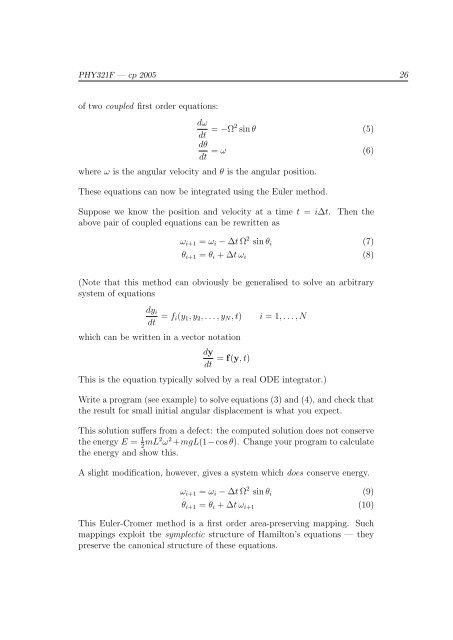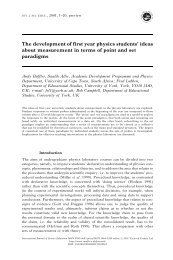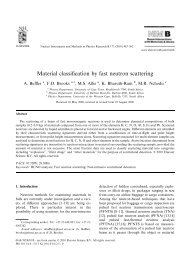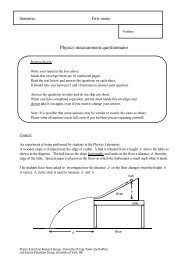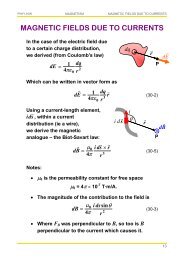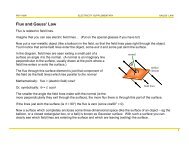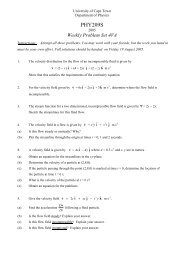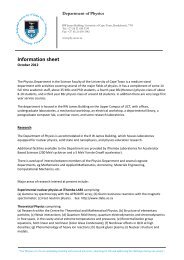You also want an ePaper? Increase the reach of your titles
YUMPU automatically turns print PDFs into web optimized ePapers that Google loves.
PHY321F — cp 2005 26<br />
of two coupled first order equations:<br />
dω<br />
dt = −Ω2 sin θ (5)<br />
dθ<br />
dt = ω (6)<br />
where ω is the angular velocity and θ is the angular position.<br />
<strong>The</strong>se equations can now be integrated using the Euler method.<br />
Suppose we know the position and velocity at a time t = i∆t. <strong>The</strong>n the<br />
above pair of coupled equations can be rewritten as<br />
ω i+1 = ω i − ∆t Ω 2 sin θ i (7)<br />
θ i+1 = θ i + ∆t ω i (8)<br />
(Note that this method can obviously be generalised to solve an arbitrary<br />
system of equations<br />
dy i<br />
dt = f i(y 1 , y 2 , . . . , y N , t)<br />
i = 1, . . . , N<br />
which can be written in a vector notation<br />
dy<br />
dt<br />
= f(y, t)<br />
This is the equation typically solved by a real ODE integrator.)<br />
Write a program (see example) to solve equations (3) and (4), and check that<br />
the result for small initial angular displacement is what you expect.<br />
This solution suffers from a defect: the computed solution does not conserve<br />
the energy E = 1 2 mL2 ω 2 +mgL(1−cos θ). Change your program to calculate<br />
the energy and show this.<br />
A slight modification, however, gives a system which does conserve energy.<br />
ω i+1 = ω i − ∆t Ω 2 sin θ i (9)<br />
θ i+1 = θ i + ∆t ω i+1 (10)<br />
This Euler-Cromer method is a first order area-preserving mapping. Such<br />
mappings exploit the symplectic structure of Hamilton’s equations — they<br />
preserve the canonical structure of these equations.


